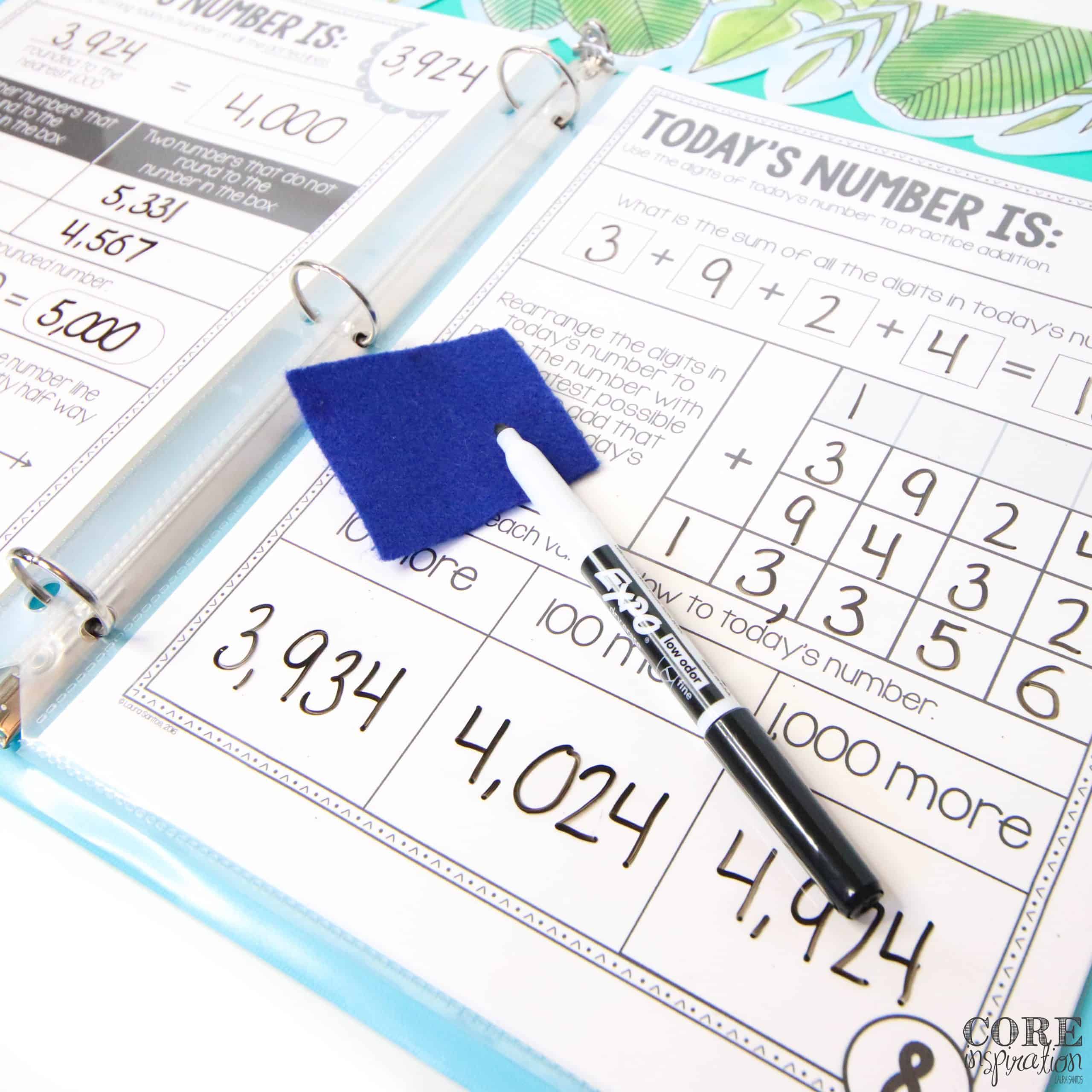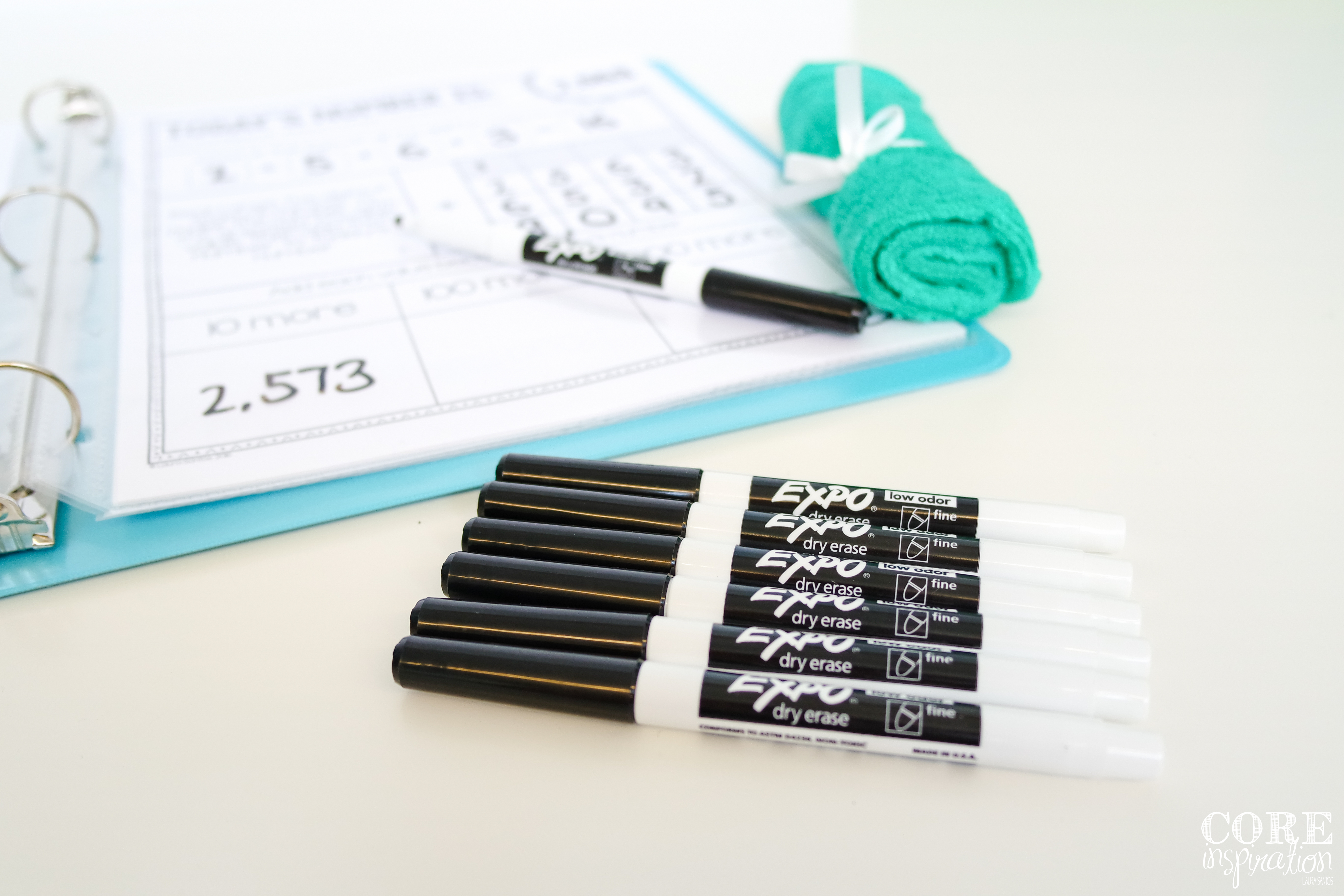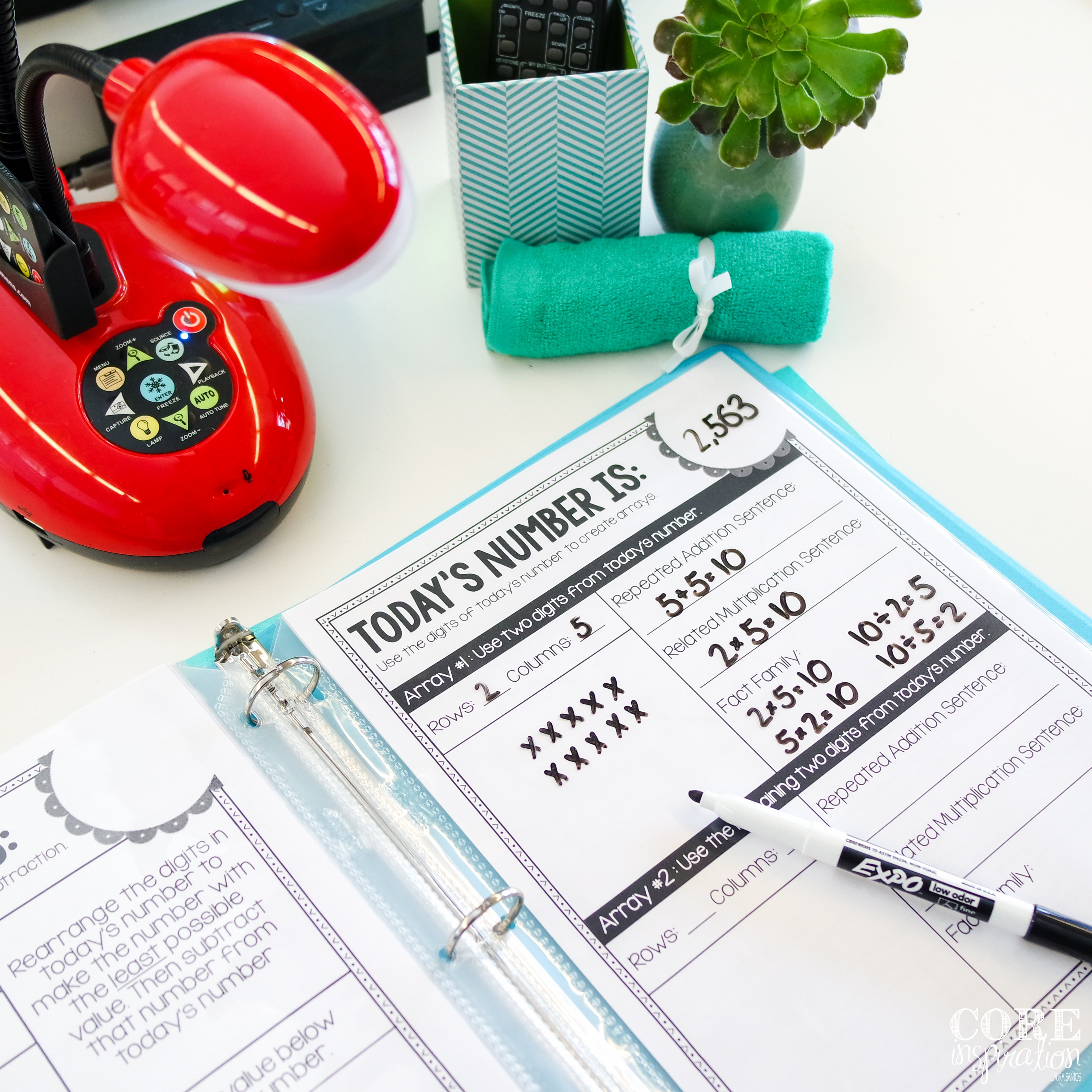Originally posted on: August 21, 2016 | Updated on: June 25, 2021
One of the greatest challenges we face as teachers is finding enough time for all the instruction we need to fit in. Oftentimes, we feel there is a need to hurry on to the next topic once we see a student has reached their learning goal. Unfortunately, this seemingly relentless need to move on robs many learners of their infinitely more important need to go back and review concepts. We learn quickly that in order to make room for the spiral review students need, we need to hit the ground running each morning when they arrive in the classroom.

MY OLD APPROACH TO MORNING WORK
During my first four years as a third grade teacher, I consistently made room for math spiral review during morning work. At that time, I used the spiral review materials included in our district math curriculum.
Although the concept was great in theory, there were days when I felt frustrated and flustered five minutes into the school day. Why? Because students were unable to work independently to complete their spiral review activities while I greeted, collected homework, and took attendance.
Sometimes the instructions were confusing, sometimes there were skills on the spiral review page that were new content rather than review, and sometimes the inconsistent page format was too overwhelming for students with special needs. Regardless, I knew this routine was not meeting the needs of our classroom. Sound familiar?
MY NEW APPROACH TO MORNING WORK
Although there is not a perfect solution for the battle between necessary spiral review and tight instructional time, I created something that may help you put an end to the reality described above. Here’s a peek at my favorite morning routine: Number of the Day Binder. This routine gives students the opportunity to independently review math concepts consistently without sacrificing rigor or relying on worksheets that don’t meet their needs.
THE NUMBER OF THE DAY BINDER ROUTINE
After my students hang their backpacks, turn in their homework, and head to their seats, they know to take a look at our whiteboard where they will see “Today’s Number” written next to our schedule. Each day, the number is different, but it is always found in the same spot. This establishes the first layer of consistency, which benefits all students, especially those with special needs.
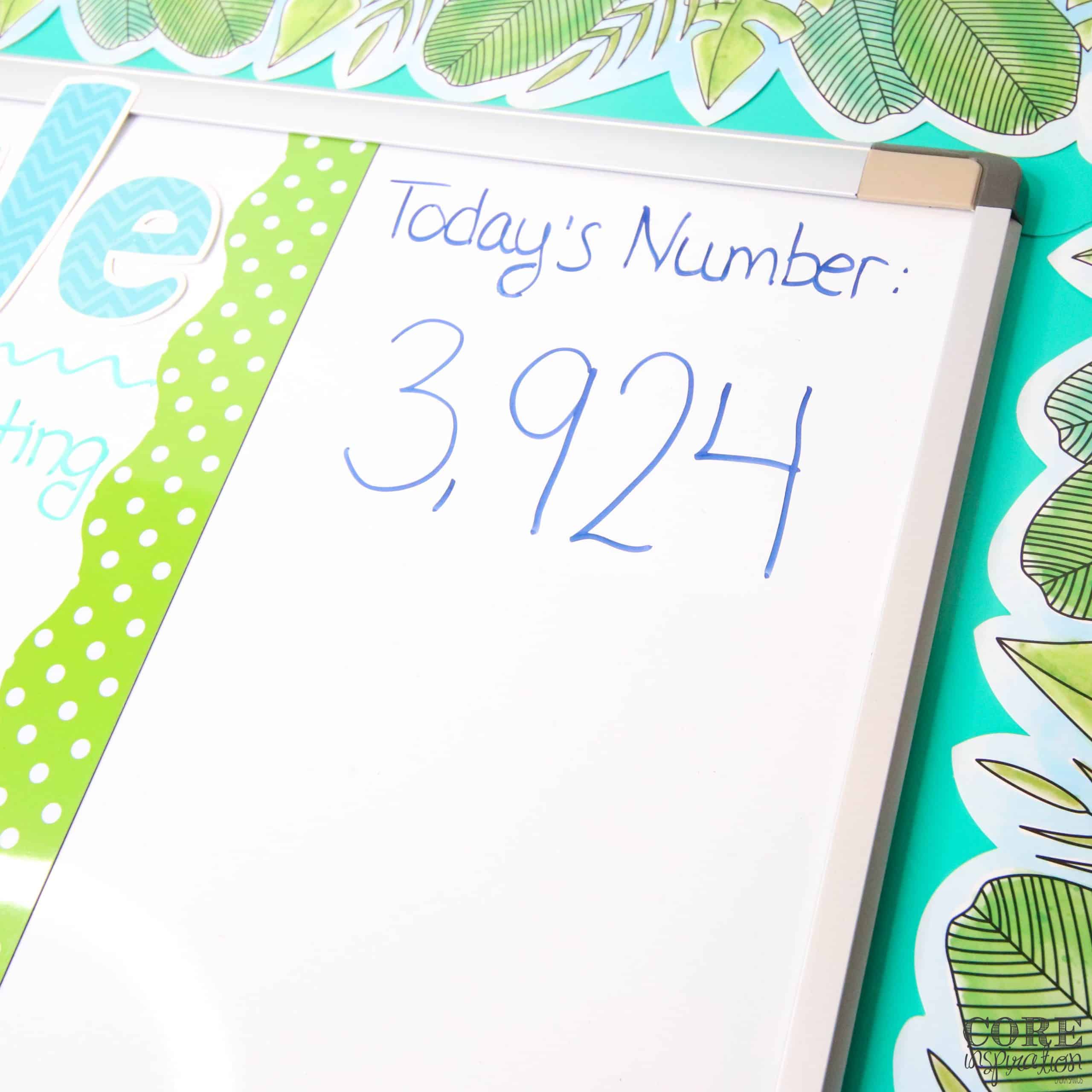
Students grab their Number of the Day supplies (their binder, a thin black whiteboard marker, and a whiteboard eraser), and get started with the daily spiral review math activities inside their binder. In our classroom, we store these supplies right inside our desks because they are used every day.

At the beginning of the year, students only work on the first couple pages of the binder. As they become more efficient with this routine and begin to master more advanced math concepts, new pages are introduced (more on that below). I find that completing a maximum of four pages a day is the number that works best for the 15-20 minute time block we have for our morning routine. This allows students to work through their spiral review at an efficient pace while still leaving an average of five minutes for them to book shop, read, or spend time on their work in progress.
While students work independently through each activity, I walk around the room to collect homework, greet students, and take attendance. When students have completed their pages for the day, they tap their head with one hand as a signal that they’d like to have their work checked.

When I see a head being tapped, I am able to quickly head over to that student’s desk and check their work for the day as they flip through the four pages they have completed. After checking the work of the first couple students, the answers I am looking for on each page are easier to recall, and checking work is a breeze as I informally gather formative assessment data.
If all pages are completed accurately, then I give students a thumbs up signal so they know they can put their binder away. If there is an error, then I simply say, “Try this page again,” rather than pointing directly to the error made. This builds students’ ability to double-check their work for accuracy.
Once they’ve made a second attempt, they tap their head silently once again to have their work checked. In most cases, the second attempt results in accuracy. If it doesn’t, I don’t take time during our morning routine to teach that student how to correct the error. I simply have them add their name to my check-in sheet (described below) for follow-up during Math Workshop. Although it is absolutely possible to correct the pages as a class, I elect not to in the interest of time.
Because each page is stored in a plastic sheet protector, students use a whiteboard marker to complete the work, erase all their pages after they’ve been checked, and reuse the pages each day.
SUPPORTING STRUGGLING STUDENTS
If students find they are struggling to complete an activity within their binder, then they add their name to the Number of the Day Check-in Sheet near our small group table. This helps me track who needs extra support or needs a quick review of one of the activities. I use this list to pull a small group during our Math Workshop time as needed.
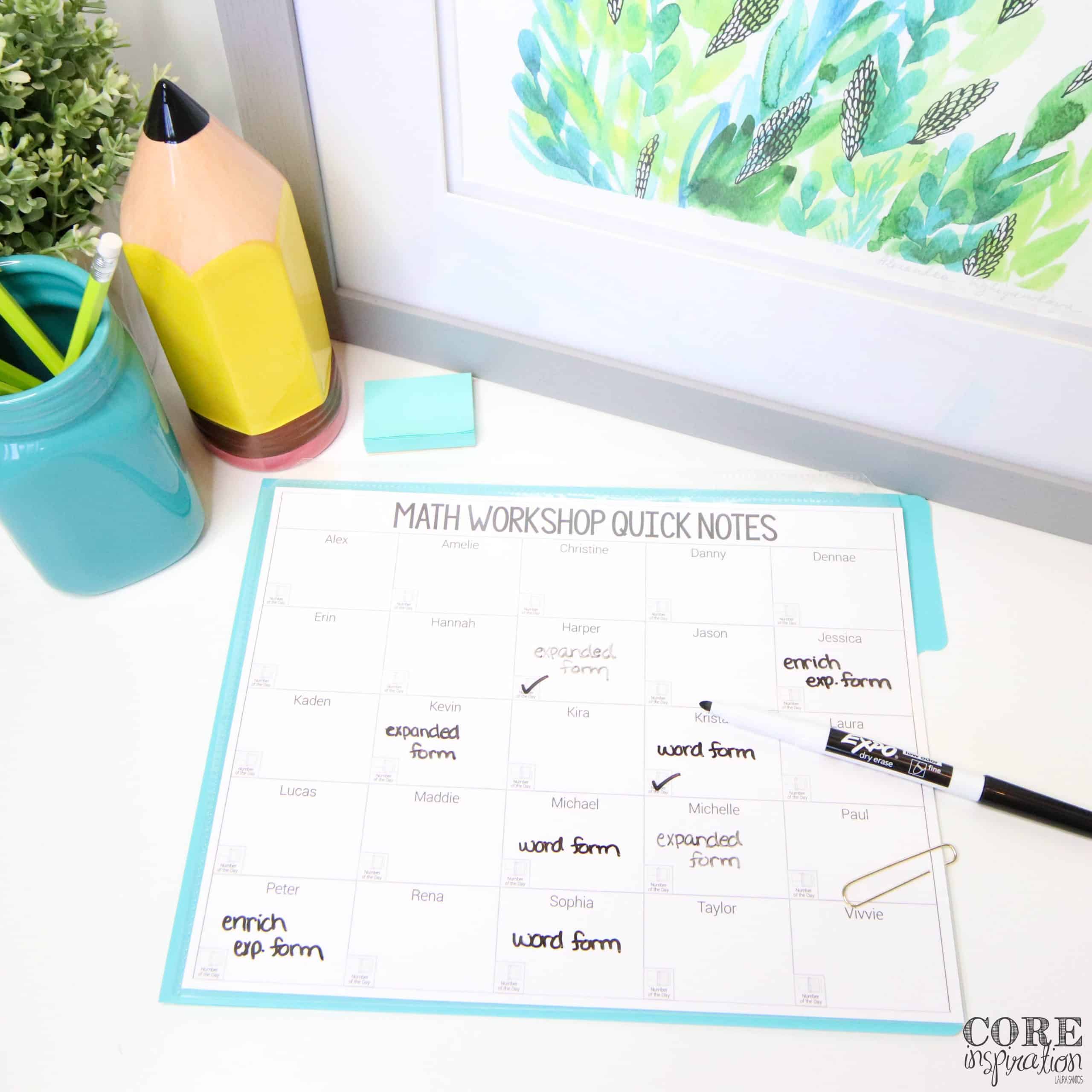
HELPING STUDENTS PACE THEMSELVES
During the first weeks of school, when I am monitoring student progress closely, we keep track of the average amount of time it should take to carefully and accurately complete four pages in the binder. Students are aware of this average so they can pace themselves while working independently. A timer is set to help them with this pacing.

EARLY FINISHERS
- “You may notice some of your neighbors are finishing up. I’m sure they are so grateful you are helping them to focus by being calm and focused yourself.”
- “There is no need to feel rushed. We will all keep focusing on our own work so everyone can reach their goals.”

When our timer rings, students tuck their work away and briefly pause their focus on math so we can have our morning meeting. After morning meeting, Math Workshop begins. During our workshop time, I have noticed a dramatic improvement in student understanding of new concepts that build on the skills practiced in their Number of the Day Binder.
INTRODUCING THE MORNING ROUTINE TO ENSURE STUDENT INDEPENDENCE
If you are thinking this Number of the Day Binder deal sounds like it may work for you, here are a few tips for establishing a strong foundation that truly supports student independence.
PREP YOUR STUDENT BINDERS
During your back-to-school prep, plan to assemble one Number of the Day Binder for each student. Print the binder pages double-sided and slide them into plastic page protectors before adding them to ½-inch binders. Add a cover page to each binder so each student can add their name and decorate. This makes it easier to return misplaced binders to their owners throughout the year.
Although any whiteboard marker or Vis-a-Vis pen will do the trick, I highly recommend thin black dry erase markers because they don’t smudge like other colors do and make it easier for you to quickly check student work.

Here are the exact supplies I use to prep my binders:
- Core Inspiration Number of the Day binder pages
- ½-inch binders
- Avery plastic sheet protectors (erase best for reuse year-after-year)
- Expo thin black dry erase markers (black ink erases best)
- Felt cut into 4” x 4” squares for erasers
DECIDE HOW YOU WILL DISPLAY YOUR NUMBER EACH DAY
Will you write your number on the whiteboard? Display it using your projector? Have a flip book filled with numbers? There is no wrong way to display your Number of the Day. Consistency is key. Whatever you decide, stick to it so your students know what to expect each day.
Also consider what will be easiest for you. Do you plan to set aside a moment before school or at recess when you can display the number before students walk into the classroom? If so, perhaps the projector approach is your best option. Worried you may be walking through the door for the first time with your students each morning? In that case, it’s probably best to have a display your student helper can change during tidy-up time the day before, like a flip deck.
TEACHING STUDENTS HOW TO COMPLETE EACH ACTIVITY
Once you’ve decided which activities you want to add to your Number of the Day Binder, create a schedule for when you want to introduce each binder page.
Introducing each page through a mini-lesson works well. First, have students watch and listen as you work through the page with a sample number. Then, display a new number and work through the page together, with yours on display and theirs on their lap or desk. The following day, you can decide if another guided practice session is needed or if you will walk the room as students work through their page independently. Follow this with a mini-lesson for the next new page in the binder.
This is also the ideal time to introduce students to the list where they can add their name if they are struggling to understand a page. This will allow you to organize small group instruction as needed and keep a nice flow to your schedule for introducing the binder pages.
READY TO IMPLEMENT THIS ROUTINE IN YOUR CLASSROOM?
I am relieved to be heading into this back-to-school season with the confidence that my students will start each morning with a consistent, rigorous spiral review routine we can all rely on. Gone are the days of wondering if this will be the morning when a student will be totally turned off to learning because his review page is too confusing or if it will take 30 minutes to collect homework because of all the questions students have about how to answer question number 8 on their worksheet.
If you are interested in bringing a consistent, rigorous spiral review routine to your classroom, then I recommend these resources for a smooth transition into the Number of the Day routine I’ve described here.
THE NUMBER OF THE DAY BINDER PROGRAM
Unlike the Number of the Day printables you may have used in the past, these cohesive binders are filled with activities that require more advanced problem solving and reasoning skills. You will also save time and paper all year long with the reusable format. You can purchase each binder individually or maximize your differentiation by bundling all the binders that meet your needs.
WANT TO GIVE NUMBER OF THE DAY BINDERS A TEST DRIVE FIRST?
If you’re still on the fence about whether or not Number of the Day Binders are a good fit for your classroom, my free sample is for you. Complete the form below and I will send you two sample pages from each grade level (2nd, 3rd, and 4th) to test drive with your students.
I hope you enjoy using this routine to make the most of every instructional minute so you have the time and energy it takes to progress through new content while incorporating spiral review into your classroom schedule. If you have any questions or thoughts about this routine, please comment below.

